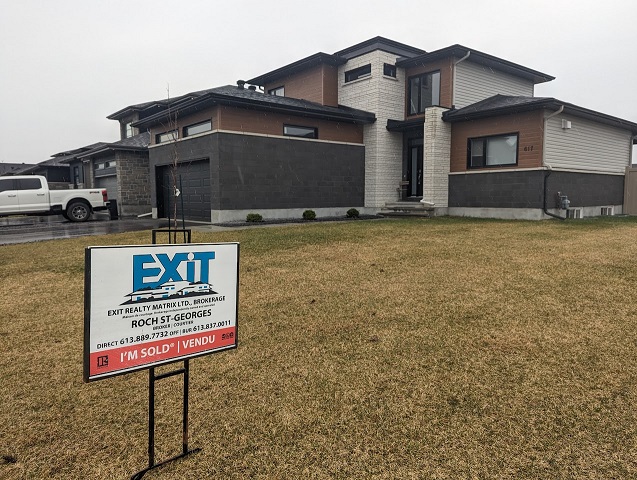Boost Your Real Estate Portfolio with Expert Asset Review Strategies
In the dynamic world of real estate investment, regularly reviewing your portfolio is crucial for maintaining and enhancing the performance of your assets. A thorough real estate portfolio review not only helps in assessing the overall health of your investments but also in identifying any underperforming assets that could be dragging down your returns. By pinpointing these properties, investors can make informed decisions about whether to hold, sell, or reposition them, thereby optimizing the portfolio for better financial outcomes.
Underperforming assets in a real estate portfolio can significantly impact overall returns, especially if they go unnoticed or unaddressed. Factors such as market changes, property management issues, or shifts in tenant demand can all contribute to a property's declining performance. Regular portfolio reviews, therefore, are essential to spot these issues early and take corrective action.
Steps to Evaluate Each Property in Your Portfolio
A comprehensive evaluation of each property within your real estate portfolio is the cornerstone of a successful portfolio review. This step involves a systematic analysis of several key performance indicators (KPIs) to determine how well each asset is performing relative to your investment goals.

Key Metrics to Assess Property Performance
To begin with, it's essential to understand the specific metrics that indicate property performance. Some of the most critical KPIs include:
-
Net Operating Income (NOI): This metric represents the income generated from a property after operating expenses have been deducted but before taxes and interest payments. A declining NOI could signal that a property is underperforming due to higher expenses or lower rental income.
-
Cash Flow: Cash flow measures the money left over after all expenses, including mortgage payments, are made. Positive cash flow is essential for sustaining long-term investments, while negative cash flow may indicate the need for intervention.
-
Capitalization Rate (Cap Rate): The cap rate is calculated by dividing the NOI by the property’s current market value. It provides a measure of the potential return on investment and helps compare the performance of different properties. A lower than expected cap rate may highlight an underperforming asset.
-
Occupancy Rates: High occupancy rates typically indicate strong demand and effective management, whereas low occupancy rates could be a red flag for issues such as poor location, property condition, or marketing efforts.
-
Appreciation Rate: This refers to the increase in the property’s value over time. Properties that are not appreciating as expected may be suffering from market saturation, poor neighborhood growth, or structural issues.
Tools and Methods for Tracking Property Data
Accurate and up-to-date data is vital for evaluating property performance. Modern property management software can automate the tracking of income, expenses, and other critical metrics. Additionally, regular property inspections, tenant feedback, and market research should be integrated into your evaluation process.
-
Property Management Software: Tools like Yardi, AppFolio, or Buildium can help track rent collections, maintenance costs, and occupancy rates, providing a real-time overview of property performance.
-
Market Analysis Reports: Regularly consult local market reports to stay informed about trends that could affect property values and rental demand. Services like CoStar or Zillow can provide valuable insights into market dynamics.
-
Tenant Feedback: Engaging with tenants and addressing their concerns can prevent turnover and improve occupancy rates. Surveys and regular communication can uncover potential issues that may not be immediately visible through financial metrics.

The Role of Market Trends in Property Evaluation
Market trends play a crucial role in the performance of real estate assets. Changes in the local economy, demographic shifts, and new developments can all impact property values and rental income. Regularly comparing your properties' performance against local and regional trends will help you identify potential risks and opportunities.
For example, if a particular neighborhood is experiencing a surge in development and population growth, properties in that area may see increased demand and appreciation. Conversely, if a market is becoming saturated with similar properties, this could lead to lower rents and occupancy rates, indicating the need for strategic adjustments.
By thoroughly evaluating each property using these metrics, tools, and market insights, you can clearly identify which assets in your portfolio are performing well and which may need further attention.
Identifying Underperforming Assets
Once you’ve evaluated each property in your portfolio using key performance metrics, the next step is to identify those assets that are underperforming. Underperforming assets are properties that fail to meet your financial expectations, whether due to lower-than-expected income, higher-than-anticipated expenses, or both. Recognizing these properties early is crucial to preventing them from further eroding your portfolio’s overall performance.
Characteristics of Underperforming Properties
Underperforming properties typically share some common characteristics that make them stand out during a portfolio review. Here are a few signs that a property might be underperforming:
-
Consistent Negative Cash Flow: If a property consistently fails to generate enough income to cover its operating expenses and debt service, it’s a clear indicator that it’s underperforming. This situation may arise from high vacancy rates, low rental income, or excessive maintenance costs.
-
Low Occupancy Rates: Properties that struggle to maintain tenants or have high turnover rates often underperform. This could be due to factors such as poor property management, unattractive amenities, or location-related issues.
-
Stagnant or Declining Market Value: If a property’s market value is not appreciating or, worse, is declining, it could indicate that the property is not benefiting from market growth. This could be due to local economic conditions, oversupply in the area, or physical deterioration of the property.
-
High Operating Expenses: When operating costs for a property are significantly higher than industry standards, it can drag down profitability. This could be due to outdated systems, frequent repairs, or inefficient property management.
-
Tenant Complaints and Poor Reviews: Negative feedback from tenants often correlates with underperformance. High levels of tenant dissatisfaction can lead to increased vacancy rates and reduced rental income.

Common Reasons Why Properties Underperform
Understanding the root causes of underperformance is key to determining the best course of action. Some of the most common reasons why properties underperform include:
-
Poor Property Management: Ineffective property management can lead to issues such as delayed maintenance, poor tenant relations, and inefficient rent collection, all of which can negatively impact a property’s performance.
-
Location Challenges: Properties located in areas with declining populations, poor infrastructure, or increasing crime rates are more likely to underperform. External factors such as these are often beyond the control of the investor but must be accounted for during the review process.
-
Market Saturation: An oversupply of similar rental properties in the market can lead to increased competition, driving down rental rates and occupancy levels. This is particularly common in markets experiencing rapid development.
-
Economic Downturns: Broader economic factors, such as a recession, can reduce tenant demand and increase vacancy rates, affecting cash flow and property values.
-
Deferred Maintenance: Neglecting regular maintenance can lead to costly repairs down the line, decreasing a property’s NOI. Properties in poor physical condition are less attractive to potential tenants, further contributing to underperformance.

Case Studies or Examples of Underperforming Assets
To illustrate these points, consider the following example:
Case Study: A multi-family property located in an area that was once booming due to a nearby manufacturing plant starts to underperform as the plant downsizes, leading to job losses and population decline. The property, which once had high occupancy and strong rental income, begins to experience high vacancy rates and decreasing rents. Additionally, the building’s aging HVAC system, which has been poorly maintained, results in costly repairs, further eroding profits. This combination of external economic factors and internal management issues has turned the once-profitable property into an underperforming asset.
By identifying these underperforming assets early, investors can take strategic actions—such as improving property management, investing in renovations, or selling the property—to mitigate losses and improve overall portfolio performance.
Decision-Making: Hold, Sell, or Reposition?
After identifying underperforming assets in your real estate portfolio, the next crucial step is to determine the best course of action for each property. The decision to hold, sell, or reposition an asset can significantly impact your portfolio's overall performance and long-term growth. This section will guide you through the criteria and strategies involved in making these decisions.

Criteria for Deciding the Fate of Underperforming Properties
When considering whether to hold, sell, or reposition an underperforming property, it's essential to evaluate several factors:
-
Long-Term Potential: Consider whether the property has the potential to recover and generate better returns in the future. This might involve improvements in the local market, upcoming infrastructure projects, or planned renovations that could boost property value and rental income.
-
Current and Future Market Conditions: Analyze both the current market environment and future trends. If the market is likely to improve, holding or repositioning might be a better option. Conversely, if the market is expected to decline, selling the property sooner rather than later might be more prudent.
-
Financial Impact: Assess the financial implications of each option. Selling might provide immediate capital that can be reinvested in higher-performing assets, while holding or repositioning could require additional investment but offer higher long-term returns.
-
Risk Tolerance: Your personal or organizational risk tolerance should also guide your decision. If you prefer a more conservative approach, selling underperforming assets to mitigate potential losses might be preferable. However, if you're willing to take on more risk for potential higher returns, repositioning or holding could be viable strategies.
-
Opportunity Cost: Consider the opportunity cost of each decision. Holding onto an underperforming property might tie up capital that could be better invested elsewhere. Selling or repositioning could free up resources for more lucrative opportunities.
Pros and Cons of Holding, Selling, or Repositioning Assets
Each option—holding, selling, or repositioning—has its own set of advantages and disadvantages:
-
Holding the Property:
- Pros: If the property is located in a market expected to grow, holding it could lead to appreciation and higher future returns. Holding also avoids transaction costs and potential capital gains taxes associated with selling.
- Cons: Continuing to hold an underperforming property ties up capital and may result in ongoing negative cash flow, impacting your overall portfolio performance.
-
Selling the Property:
- Pros: Selling allows you to liquidate underperforming assets and reinvest the proceeds into higher-performing properties or other investment opportunities. It also eliminates the risk of continued underperformance and potential market downturns.
- Cons: Selling may involve transaction costs, taxes, and the challenge of finding a buyer, particularly for underperforming properties. Additionally, it may limit potential future gains if the market improves.

-
Repositioning the Property:
- Pros: Repositioning involves making strategic changes—such as renovations, management improvements, or repurposing the property—to enhance its performance. This can increase rental income, occupancy rates, and property value, transforming an underperforming asset into a profitable one.
- Cons: Repositioning requires additional capital investment and may involve significant risk, particularly if market conditions do not improve as expected. It also takes time to implement and see results, which could delay financial recovery.
Strategies to Improve Performance of Underperforming Properties
If you choose to hold or reposition an underperforming property, several strategies can help improve its performance:
-
Renovations and Upgrades: Investing in property upgrades, such as modernizing units, improving curb appeal, or adding amenities, can attract higher-paying tenants and increase property value. However, it's important to ensure that the cost of renovations will be offset by the increased income or value.
-
Enhanced Property Management: Improving property management practices, such as reducing vacancy rates, optimizing rent collections, and enhancing tenant satisfaction, can significantly boost performance. This might involve hiring a more experienced property management team or implementing new technology to streamline operations.
-
Rebranding and Marketing: Repositioning can also involve rebranding the property to attract a different tenant demographic. This might include marketing the property differently, changing its use (e.g., converting a commercial space to residential), or emphasizing unique features that differentiate it from competitors.
-
Cost Optimization: Reducing operating expenses through measures like energy efficiency upgrades, renegotiating service contracts, or implementing preventive maintenance can improve NOI and overall profitability.
-
Market Timing: If market conditions are expected to improve, holding the property while implementing gradual improvements can yield higher returns in the long term. Timing the market carefully is essential to maximize the benefits of this strategy.

Engaging an Investment Specialist
When it comes to optimizing your real estate portfolio, particularly in dealing with underperforming assets, engaging a multi-family investment specialist can be a game-changer. These professionals bring a wealth of experience, market knowledge, and analytical skills that can help you make more informed decisions and improve your portfolio's overall performance.
Benefits of Consulting a Multi-Family Investment Specialist
-
Expert Analysis and Insight: A multi-family investment specialist has the expertise to perform in-depth analyses of your properties. They can assess various factors, including market trends, property management efficiency, and potential for appreciation, to provide you with a clear picture of each asset’s performance.
-
Strategic Planning: Specialists can help you develop a strategic plan for your portfolio, advising on whether to hold, sell, or reposition specific assets. Their recommendations are based on a combination of market data, financial analysis, and industry trends, ensuring that your decisions are well-informed and aligned with your investment goals.
-
Market Access and Networking: Investment specialists have extensive networks in the real estate industry, including connections with brokers, property managers, and other investors. This network can be invaluable in finding buyers for underperforming properties, sourcing better management teams, or identifying new investment opportunities.
-
Risk Management: By leveraging their knowledge of market cycles and economic indicators, a specialist can help you mitigate risks associated with holding or repositioning underperforming properties. They can also advise on diversification strategies to protect your portfolio from market volatility.
-
Time and Resource Efficiency: Managing a real estate portfolio, particularly one with multiple properties, can be time-consuming and complex. Engaging a specialist allows you to delegate much of the analytical and strategic work, freeing up your time to focus on other aspects of your business or personal life. This can lead to more efficient use of your resources and a more streamlined investment process.

How a Specialist Can Add Value in the Portfolio Review Process
During a portfolio review, a specialist can offer several value-added services that go beyond basic property evaluation:
-
Customized Performance Metrics: Specialists can create customized performance metrics tailored to your specific investment goals. This personalized approach ensures that your portfolio is evaluated against the criteria that matter most to you, rather than generic industry benchmarks.
-
Identification of Hidden Opportunities: With their deep market knowledge, specialists can identify opportunities that may not be immediately obvious, such as emerging neighborhoods, undervalued properties, or trends in tenant demand that could enhance your portfolio’s performance.
-
Negotiation and Transaction Support: If you decide to sell or reposition an underperforming property, a specialist can assist with negotiations and transaction management. Their expertise can help you secure better terms, whether you’re selling a property or acquiring a new one.
-
Post-Transaction Analysis: After a transaction is completed, a specialist can conduct a post-transaction analysis to evaluate the impact on your portfolio. This ongoing support ensures that you continue to optimize your investments and make adjustments as needed.
Steps to Find and Work with the Right Specialist
Finding the right multi-family investment specialist is crucial to maximizing the benefits of their services. Here are some steps to help you identify and collaborate with the right professional:
-
Research and Referrals: Start by researching specialists with a strong track record in multi-family real estate. Referrals from other investors, real estate professionals, or industry associations can also lead you to reputable specialists.
-
Evaluate Experience and Expertise: Look for a specialist with extensive experience in your target markets and property types. They should have a proven ability to manage complex portfolios and a deep understanding of market dynamics.
-
Check References and Reviews: Before committing to a specialist, check their references and read reviews from past clients. This will give you insight into their working style, effectiveness, and ability to deliver results.
-
Discuss Your Goals: Once you’ve identified potential specialists, have an in-depth discussion about your investment goals, current portfolio performance, and expectations. This conversation will help you gauge whether the specialist’s approach aligns with your objectives.
-
Set Clear Terms and Expectations: When you decide to work with a specialist, establish clear terms of engagement, including fees, services provided, and performance expectations. Regular communication and updates should be part of the agreement to ensure that you stay informed about your portfolio’s progress.
By regularly evaluating each property, identifying underperforming assets, and making informed decisions about whether to hold, sell, or reposition those assets, you can significantly enhance the performance of your portfolio.
Engaging a multi-family investment specialist adds an additional layer of expertise and strategic insight, allowing you to navigate complex market conditions and capitalize on hidden opportunities. These professionals can help you craft a tailored approach to managing your portfolio, ensuring that you achieve your investment goals while mitigating risks.
In the ever-changing real estate market, staying proactive and informed is key. Whether you're managing a large portfolio or just a few properties, regular reviews and strategic adjustments are crucial to ensuring that your investments continue to perform at their best. By following the steps outlined in this article, you can take control of your real estate portfolio and make the most of your investments.

Enjoyed this read? You might also benefit from How a Real Estate Portfolio Review Can Boost Your Investments, which dives into the importance of regular portfolio reviews. For insights on maintaining a balanced portfolio, check out How to Diversify and Manage Risk in Your Real Estate Portfolio. To take your real estate investments to the next level, call me at 613-889-7732 or schedule a meeting at calendly.com/rochstgeorges to discuss how we can improve your portfolio’s profitability.







